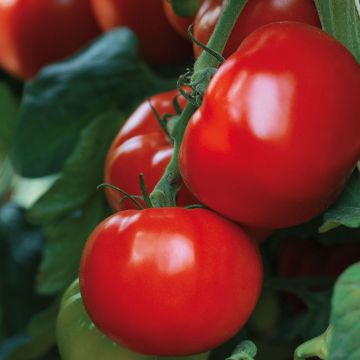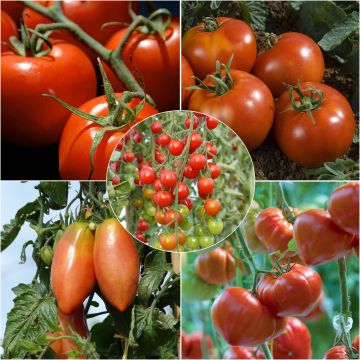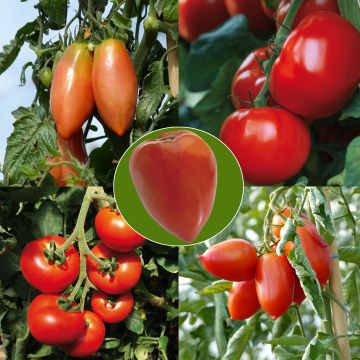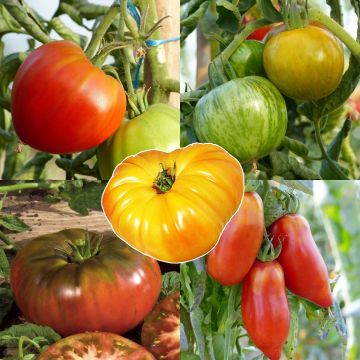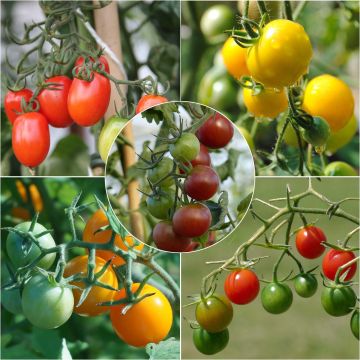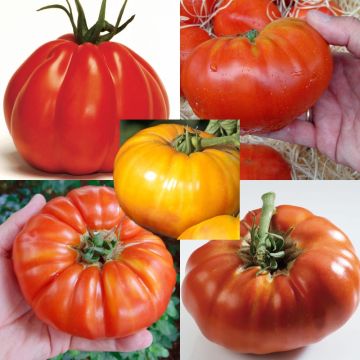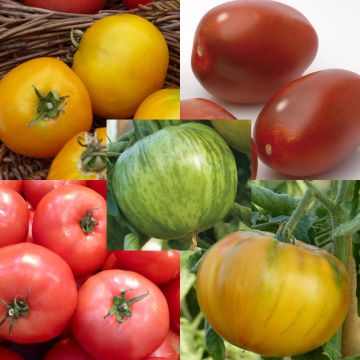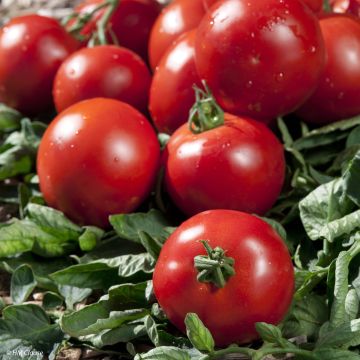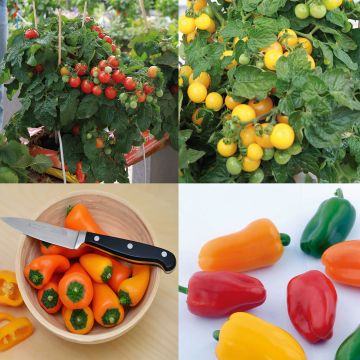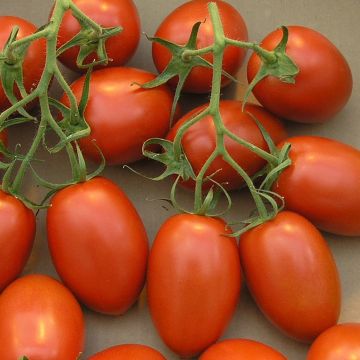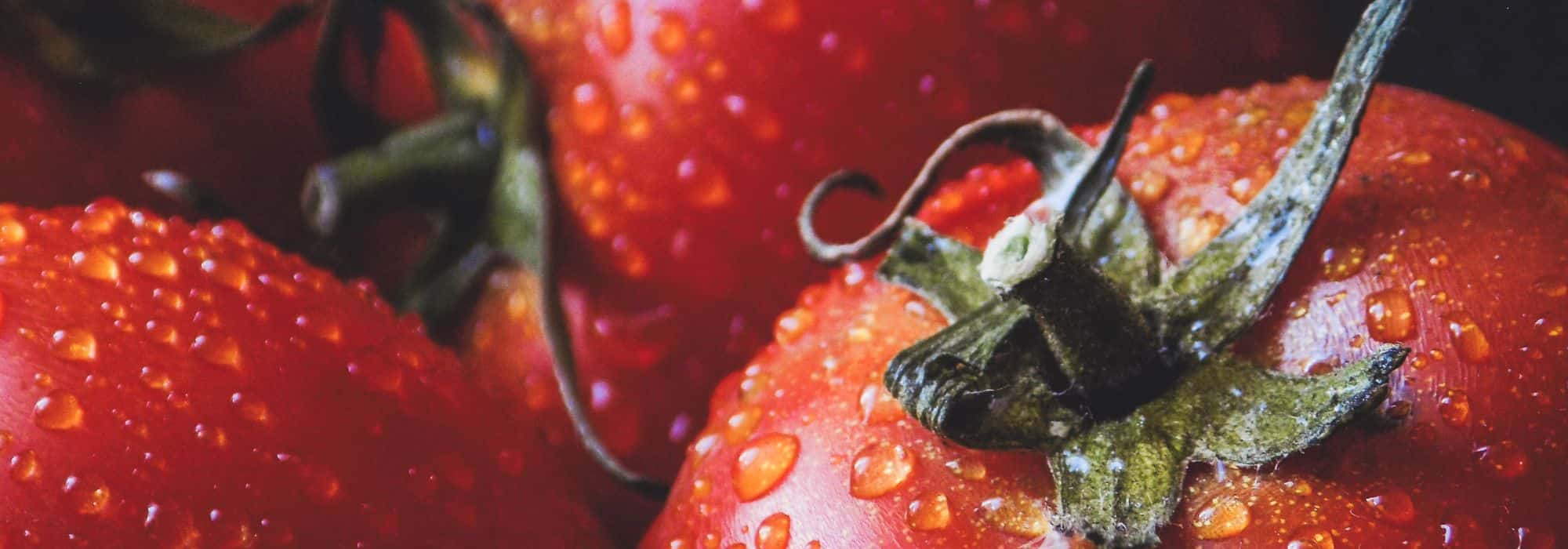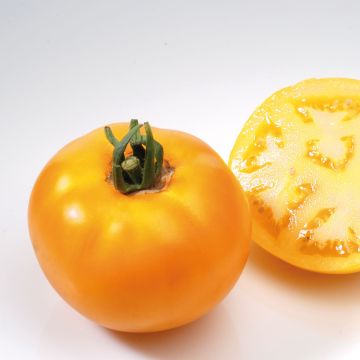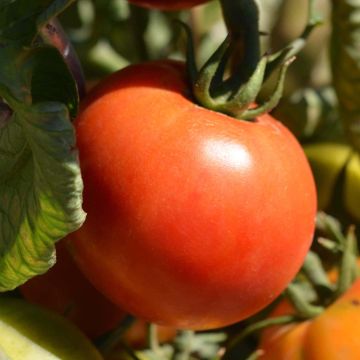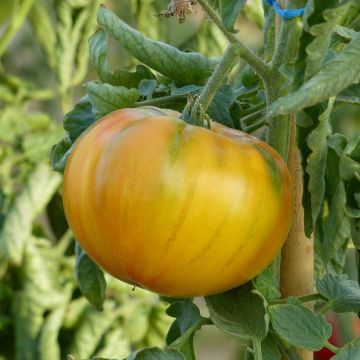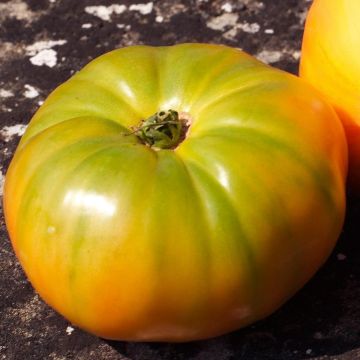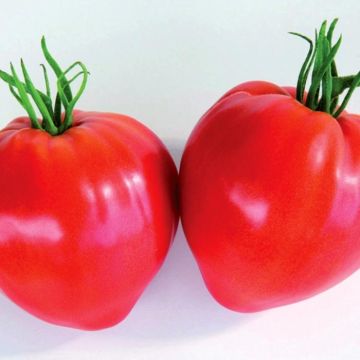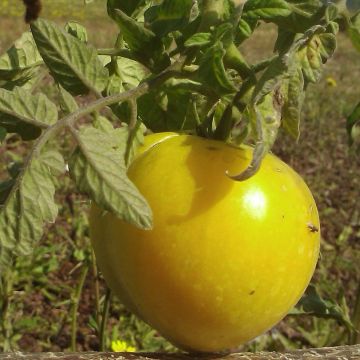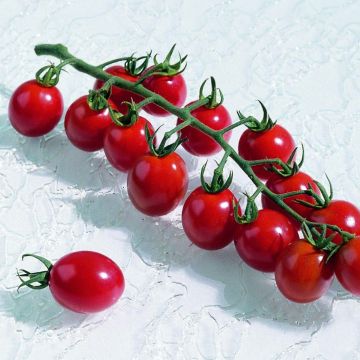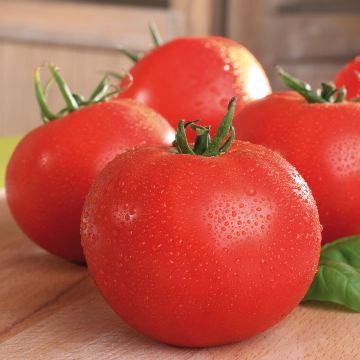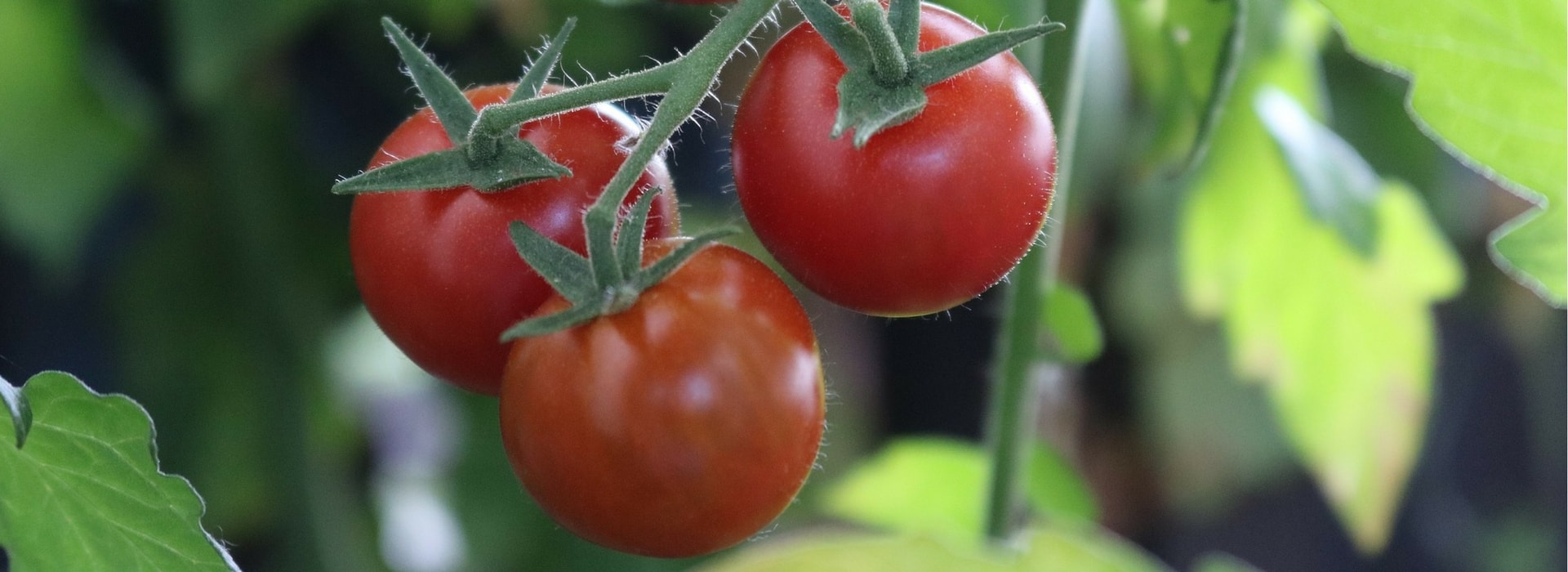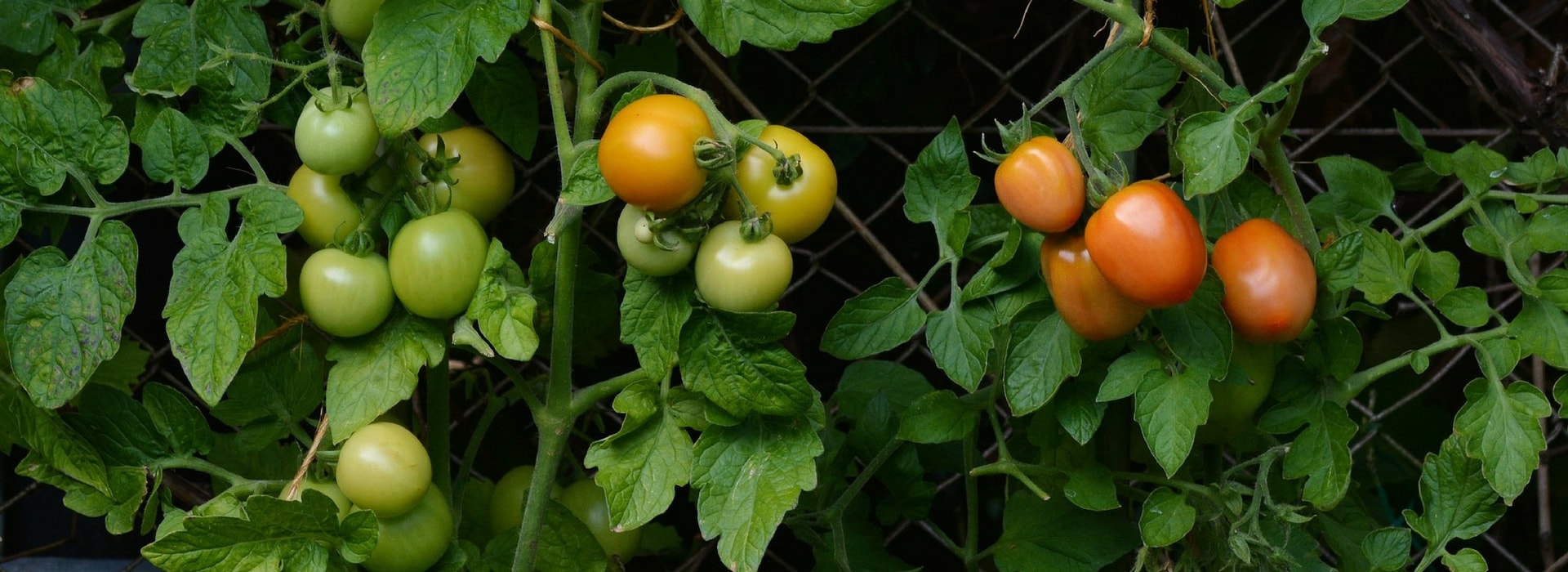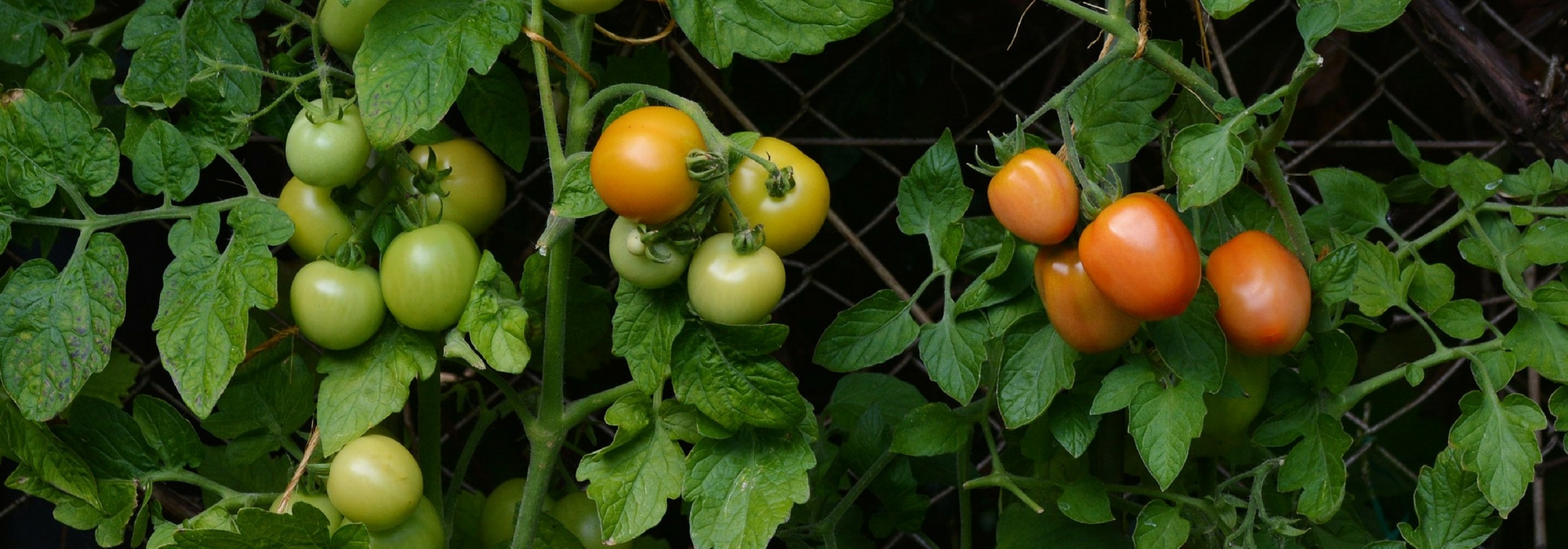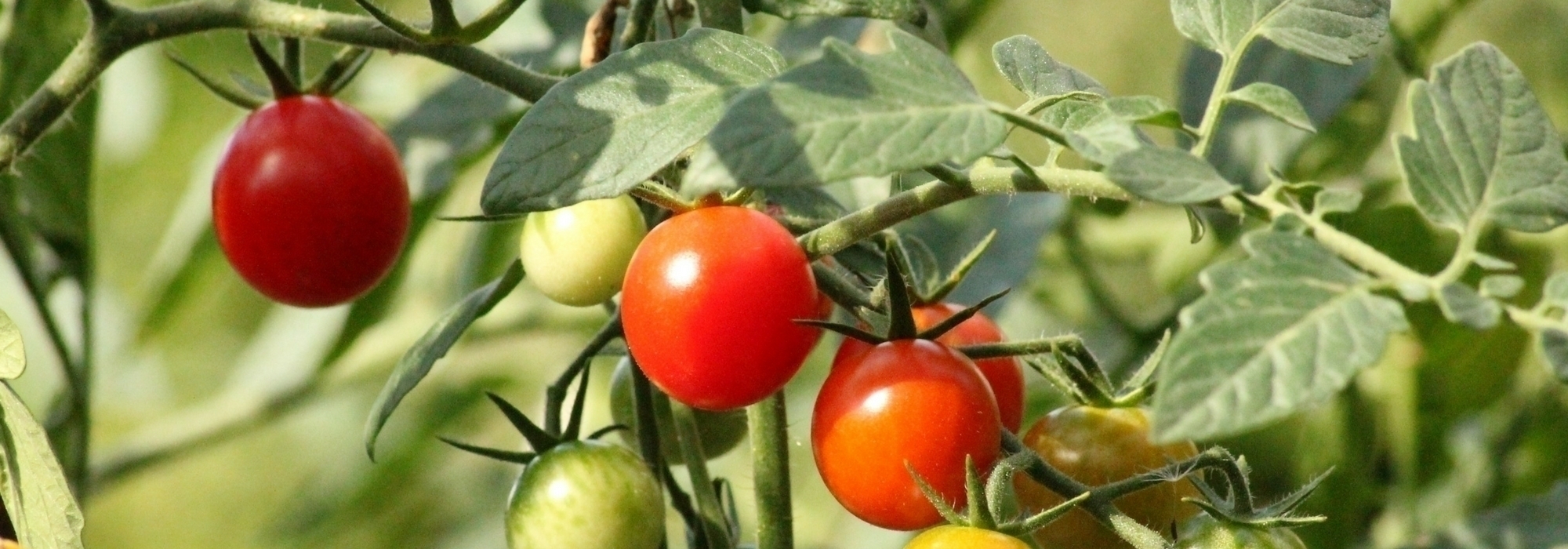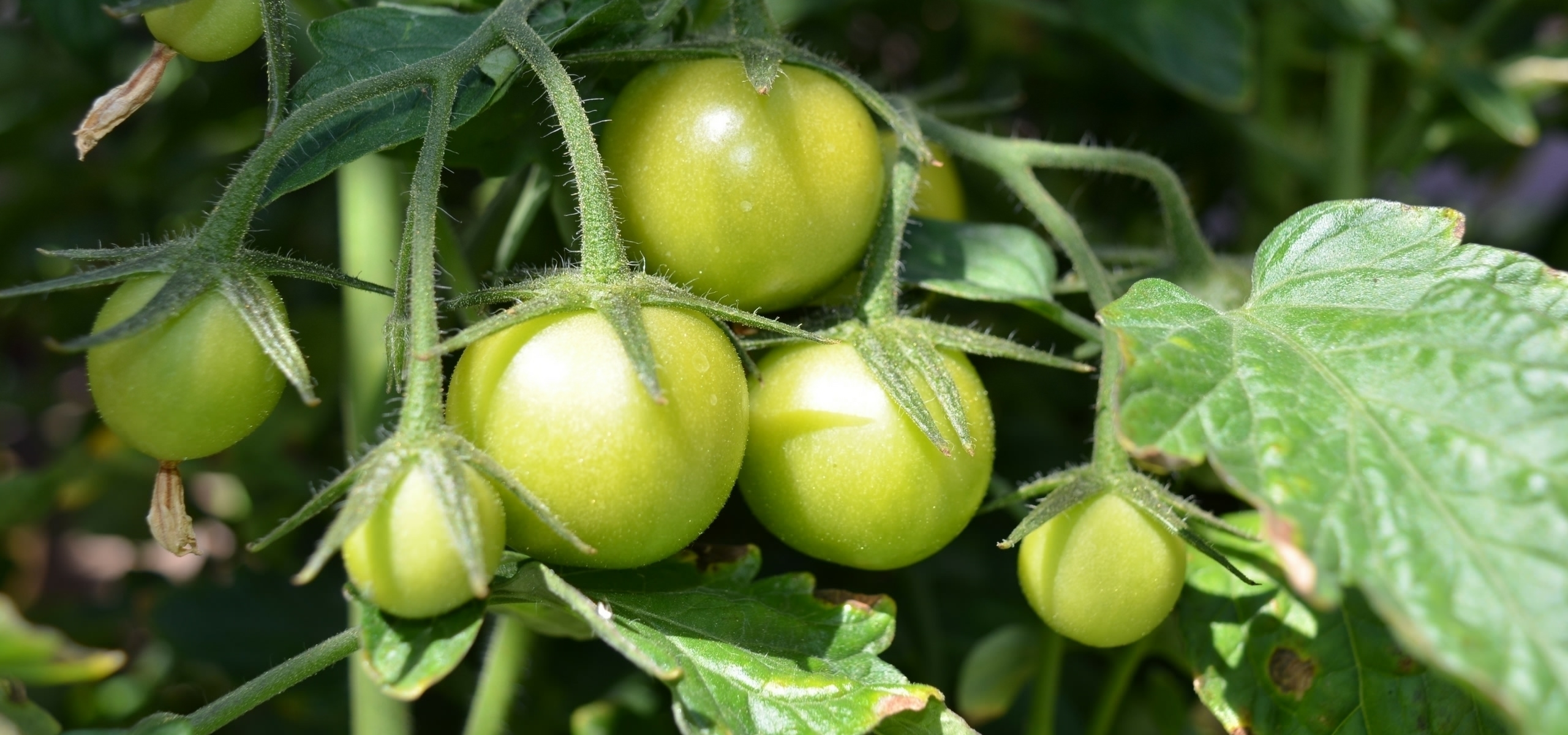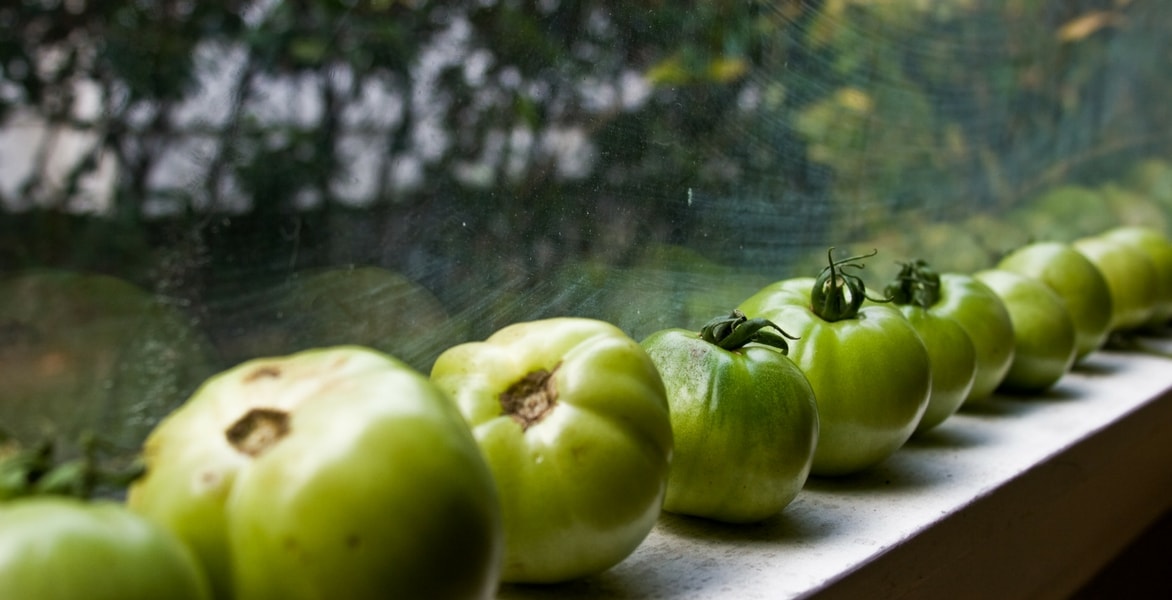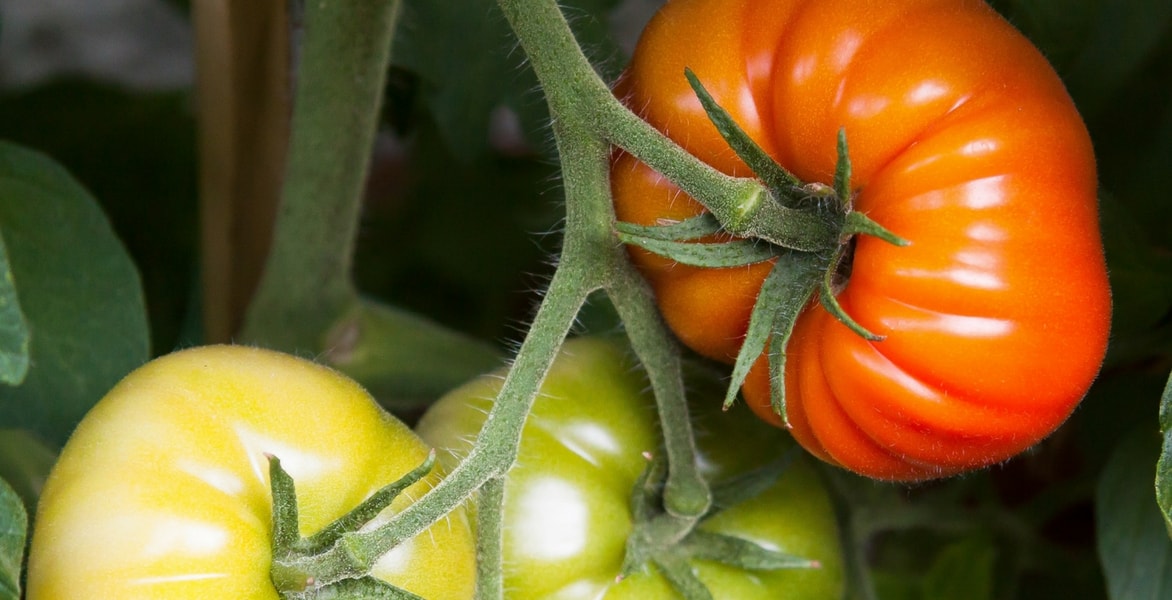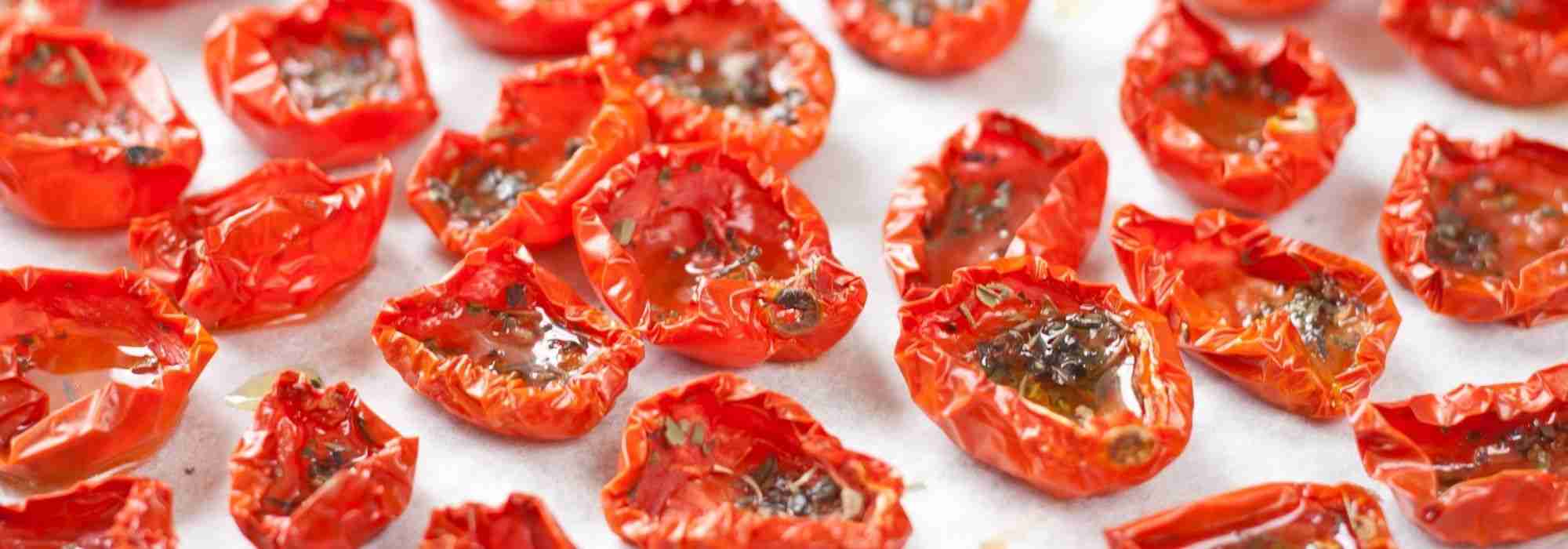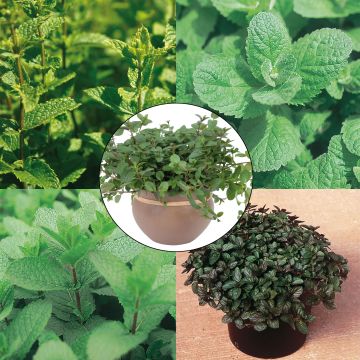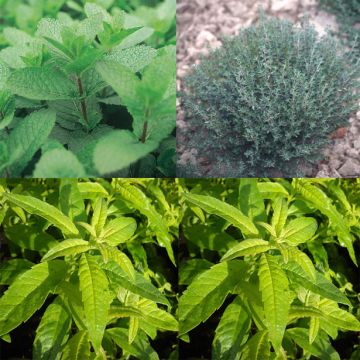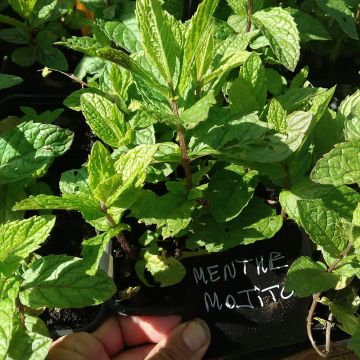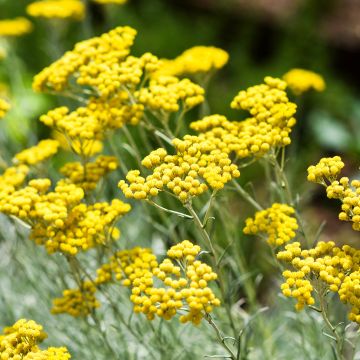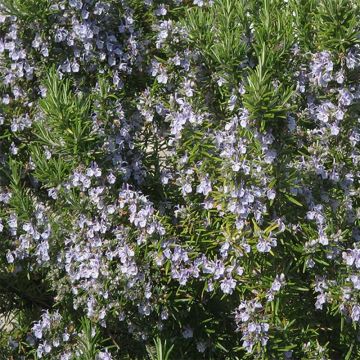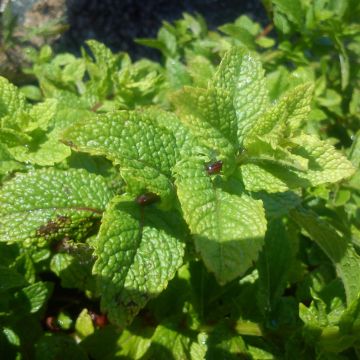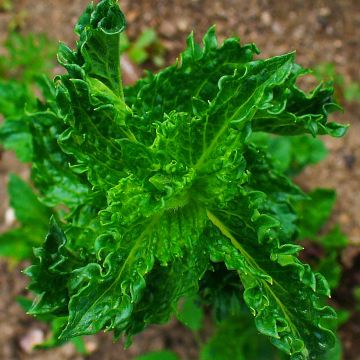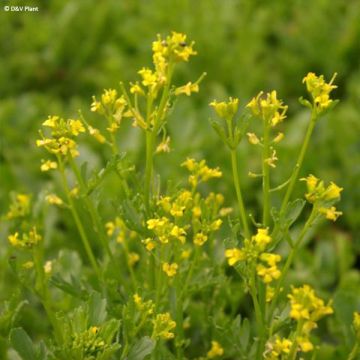

Tomato Totem F1 Seedlings
Tomato Totem F1 Seedlings
Solanum lycopersicum Totem F1
Tomato
Special offer!
Receive a €20 voucher for any order over €90 (excluding delivery costs, credit notes, and plastic-free options)!
1- Add your favorite plants to your cart.
2- Once you have reached €90, confirm your order (you can even choose the delivery date!).
3- As soon as your order is shipped, you will receive an email containing your voucher code, valid for 3 months (90 days).
Your voucher is unique and can only be used once, for any order with a minimum value of €20, excluding delivery costs.
Can be combined with other current offers, non-divisible and non-refundable.
Why not try an alternative variety in stock?
View all →This plant carries a 6 months recovery warranty
More information
We guarantee the quality of our plants for a full growing cycle, and will replace at our expense any plant that fails to recover under normal climatic and planting conditions.
Description
The Tomato Totem F1 is a dwarf variety of Cherry type tomato originating from Russia, forming numerous clusters of slightly ovoid, ruby red fruits weighing 30 to 50 g with a very sweet flavor. The plants reach a height of 30 to 50 cm (12 to 20in) and can be grown in containers on the balcony, patio or even on a windowsill. They take on a Christmas tree-like appearance with a ready-made decoration of red balls. Don't hesitate to hang the Tomato Totem in baskets where you can let its stems and leaves hang down languidly. The plants should be planted from April to June, after the last frost, for harvesting from July to October.
NB: This variety is labeled F1 for "hybrid F1" as it is a variety resulting from the cross-breeding of carefully selected parents to combine their qualities. This results in a variety that can be particularly flavorful and/or early while also being resistant to certain diseases. Sometimes criticized or wrongly associated with GMOs, F1 hybrid seeds are interesting both for their uniformity and their resistance, but unfortunately, their qualities do not pass on to subsequent generations, so it will not be possible to save the seeds for future sowings.
The tomato plant is a perennial herbaceous plant in tropical climates but is grown as an annual in our latitudes. It lignifies over time and produces small, insignificant yellow flowers grouped in clusters that will transform into fruits.
It must be admitted that its fruit is very attractive and adds a pleasant color to the vegetable garden. It also has many nutritional advantages. Low in calories like most vegetables, rich in water, it contains a very interesting molecule: lycopene, a powerful antioxidant. And the longer the tomato is cooked, the more lycopene becomes available. It is also distinguished by its richness in vitamin C, provitamin A, and trace elements.
Today, its taste and nutritional qualities are well established. For gardeners, the tomato is one of the essential vegetables of summer. They simply need to consider how they plan to use it to guide them among the many existing varieties. Is it for salads, sauces, consumption on-site, cooked, etc.? They will also consider when they want to harvest it. The answer will of course be influenced by the average summer sunshine in the region where their garden is located. Rest assured, the choice is vast and there is a tomato for every situation! And while tomatoes do require a lot of sun and heat, they do not necessarily need a lot of space. That's why you shouldn't hesitate to grow them in containers on your balcony, where you can focus on varieties with small fruits. Be careful, immature fruits, stems, and leaves contain solanine and should not be consumed.
Harvesting: depending on the variety, from early to late, it can take 50 to 100 days between the transplanting date and the harvest. There is no foolproof trick to know for sure when a tomato has reached full ripeness. The harvest will be done when, at the very least, it is completely colored as announced and when its texture, while remaining firm, shows slight softening. For better preservation, be sure to pick the fruit with its calyx.
Storage: tomatoes do not keep as long as their water content is high. They can be stored for a few days in the vegetable compartment of your refrigerator or spread out in the open air. To keep them longer, consider culinary methods such as tomato confit, dried tomatoes, sauces, frozen fruits, preserves, jams, or juices. We love to confit them because it's so simple and delicious: cut your tomatoes in half and collect the juice. Place your halved tomatoes face up on the baking tray of your oven. Season with salt, pepper, and sugar, then bake at a very low temperature for at least an hour. Remove your tomatoes and consume immediately, otherwise, store them in a glass jar and cover with olive oil.
The gardener's tip: it is recommended to grow several varieties of tomatoes each year to minimize the risk of complete loss of harvest due to climatic conditions or specific diseases.
To prevent the phenomenon of 'blossom end rot' - not a disease but a calcium deficiency - spray a comfrey maceration rich in calcium on your plants.
When transplanting, do not hesitate to bury the stem up to the first leaves. This will stimulate the root system, ensuring a bountiful fruit harvest.
Winning combinations in the garden are often the same on the plate. It's a good mnemonic device to remember that tomatoes and basil go well together.
Harvest
Plant habit
Foliage
Other Tomato plants
View all →Planting and care
Tomato plants are easy to grow. Sunlight and heat are crucial for the success of this crop. Tomatoes prefer rich, well-drained soil that is deeply tilled. A few months before planting, add mature compost after loosening the soil. If your soil is heavy, add some sand at the time of planting.
Initially, allow the plug plants to grow by transplanting them into 8 to 10.5 cm (3 to 4in) buckets filled with potting soil. Place the plants in a sunny and heated location: the temperature should never drop below 12-14°C (53.6-57.2°F), otherwise the foliage will turn yellow and the plant's growth will stop. When the plants reach a height of approximately 15 cm (6in), transplant them into the ground if the outdoor temperatures permit.
Transplanting into the ground should be done once the risk of frost has passed, usually after the Ice Saints in mid-May. Choose a very sunny and sheltered location. Space the plants 50 cm (20in) apart in rows and 70 cm (28in) between rows if you prune, or 1m (0 or 3ft) in all directions for unpruned cultivation. Dig a hole (3 times the volume of the plug), add some well-decomposed compost to the bottom of the hole. Place your plant with the graft point at ground level and then fill in. Firm the soil, create a basin around the base and then water thoroughly. Be careful not to wet the leaves to protect your plants from fungal diseases.
Install stakes (soon after planting to avoid damaging the roots). Mulch at the base of the plants. Water regularly as irregular watering can cause calcium deficiency, resulting in apical necrosis commonly known as 'blossom end rot'.
Furthermore, tomatoes, like potatoes, are susceptible to late blight. This is a fungal disease caused by the Phytophthora infestans fungus. Late blight develops in hot and humid weather. Small spots appear, white on the undersides of leaves and green-gray on the upper sides. To reduce the risk, space the plants sufficiently and avoid watering the foliage. In terms of crop rotation, wait 4 years before growing a plant from the Solanaceae family in the same location and do not grow them in neighboring rows. If necessary, spray with Bordeaux mixture or preparations such as horsetail decoction or garlic purée.
Less common, growing tomatoes in pots is still possible by choosing varieties with small fruits and placing the pot in a very sunny location.
Cultivation
Care
Intended location
Planting & care advice
This item has not been reviewed yet - be the first to leave a review about it.
Similar products
Haven't found what you were looking for?
Hardiness is the lowest winter temperature a plant can endure without suffering serious damage or even dying. However, hardiness is affected by location (a sheltered area, such as a patio), protection (winter cover) and soil type (hardiness is improved by well-drained soil).

Photo Sharing Terms & Conditions
In order to encourage gardeners to interact and share their experiences, Promesse de fleurs offers various media enabling content to be uploaded onto its Site - in particular via the ‘Photo sharing’ module.
The User agrees to refrain from:
- Posting any content that is illegal, prejudicial, insulting, racist, inciteful to hatred, revisionist, contrary to public decency, that infringes on privacy or on the privacy rights of third parties, in particular the publicity rights of persons and goods, intellectual property rights, or the right to privacy.
- Submitting content on behalf of a third party;
- Impersonate the identity of a third party and/or publish any personal information about a third party;
In general, the User undertakes to refrain from any unethical behaviour.
All Content (in particular text, comments, files, images, photos, videos, creative works, etc.), which may be subject to property or intellectual property rights, image or other private rights, shall remain the property of the User, subject to the limited rights granted by the terms of the licence granted by Promesse de fleurs as stated below. Users are at liberty to publish or not to publish such Content on the Site, notably via the ‘Photo Sharing’ facility, and accept that this Content shall be made public and freely accessible, notably on the Internet.
Users further acknowledge, undertake to have ,and guarantee that they hold all necessary rights and permissions to publish such material on the Site, in particular with regard to the legislation in force pertaining to any privacy, property, intellectual property, image, or contractual rights, or rights of any other nature. By publishing such Content on the Site, Users acknowledge accepting full liability as publishers of the Content within the meaning of the law, and grant Promesse de fleurs, free of charge, an inclusive, worldwide licence for the said Content for the entire duration of its publication, including all reproduction, representation, up/downloading, displaying, performing, transmission, and storage rights.
Users also grant permission for their name to be linked to the Content and accept that this link may not always be made available.
By engaging in posting material, Users consent to their Content becoming automatically accessible on the Internet, in particular on other sites and/or blogs and/or web pages of the Promesse de fleurs site, including in particular social pages and the Promesse de fleurs catalogue.
Users may secure the removal of entrusted content free of charge by issuing a simple request via our contact form.
The flowering period indicated on our website applies to countries and regions located in USDA zone 8 (France, the United Kingdom, Ireland, the Netherlands, etc.)
It will vary according to where you live:
- In zones 9 to 10 (Italy, Spain, Greece, etc.), flowering will occur about 2 to 4 weeks earlier.
- In zones 6 to 7 (Germany, Poland, Slovenia, and lower mountainous regions), flowering will be delayed by 2 to 3 weeks.
- In zone 5 (Central Europe, Scandinavia), blooming will be delayed by 3 to 5 weeks.
In temperate climates, pruning of spring-flowering shrubs (forsythia, spireas, etc.) should be done just after flowering.
Pruning of summer-flowering shrubs (Indian Lilac, Perovskia, etc.) can be done in winter or spring.
In cold regions as well as with frost-sensitive plants, avoid pruning too early when severe frosts may still occur.
The planting period indicated on our website applies to countries and regions located in USDA zone 8 (France, United Kingdom, Ireland, Netherlands).
It will vary according to where you live:
- In Mediterranean zones (Marseille, Madrid, Milan, etc.), autumn and winter are the best planting periods.
- In continental zones (Strasbourg, Munich, Vienna, etc.), delay planting by 2 to 3 weeks in spring and bring it forward by 2 to 4 weeks in autumn.
- In mountainous regions (the Alps, Pyrenees, Carpathians, etc.), it is best to plant in late spring (May-June) or late summer (August-September).
The harvesting period indicated on our website applies to countries and regions in USDA zone 8 (France, England, Ireland, the Netherlands).
In colder areas (Scandinavia, Poland, Austria...) fruit and vegetable harvests are likely to be delayed by 3-4 weeks.
In warmer areas (Italy, Spain, Greece, etc.), harvesting will probably take place earlier, depending on weather conditions.
The sowing periods indicated on our website apply to countries and regions within USDA Zone 8 (France, UK, Ireland, Netherlands).
In colder areas (Scandinavia, Poland, Austria...), delay any outdoor sowing by 3-4 weeks, or sow under glass.
In warmer climes (Italy, Spain, Greece, etc.), bring outdoor sowing forward by a few weeks.






























